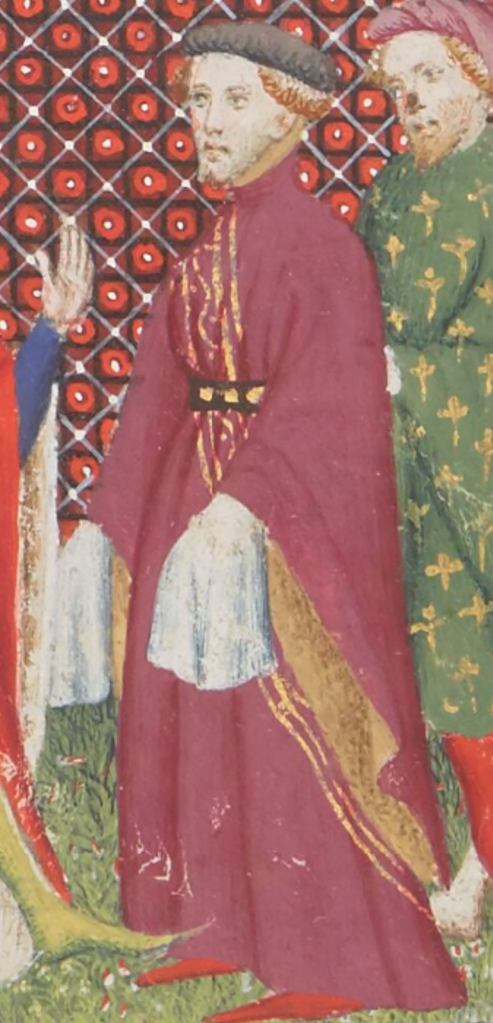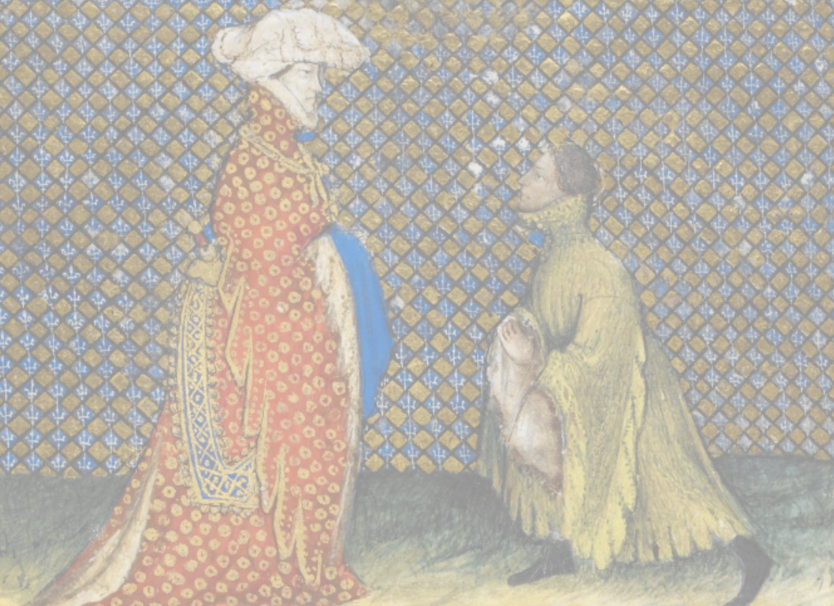It appears again and again in manuscripts from 1400-1430 (ish): the wrist ruffle, often but not always in contrasting color compared to the houppelande or pourpoint. Worn by both men and women. Sometimes overhanging the hands. Yet it’s almost never seen in patterns. What is it?


















The rochet theory
Fashion History Timeline mentions a garment called a rochet when analyzing a garment with a wrist ruffle:
Visible at her wrists is evidence of a relatively rare garment, called the rochet. The rochet, which was also worn by men, is defined by Van Buren and Wieck as “a long tunic worn between the under and outer garments, usually of blanchet, a white wool”
1400-1409 Fashion History Timeline, State University of New York
There are few other references to the rochet or rochettum as a non-religious garment. As a religious garment, the rochet had narrow sleeves, compared to a surplice which would have wider sleeves.
Features of the wrist ruffle
As seen in the manuscripts, the ruffle could be lined, dagged or hemmed with a decorative band. If was slightly more often of a contrasting color than of the same color as the outer garment.
I’m inclined to believe that the majority of wrist ruffles are not explained by people wearing rochets, at least not in men’s outfits. It seems as if it could be attached either to the outer garment (houppelande) or under garment (pourpoint). It’s unclear if it was a permanent feature of the garment or if it was attached in such a way that it would be easily changed and varied.
Jean Creton’s wrist ruffle
Jean Creton has a narrowing garment at his left wrist. My current theory is that the houppelande have bombarde sleeves and the narrowing garment is a wrist ruffle attached to a pourpoint under garment. The wrist ruffle appears to be white and possibly slightly dagged, implying the use of a white wool. It could also be a brown ruffle lined with white fur. However, no brown ruffles were seen in the manuscript material, and it was likely not a fashion color outside of furs.


Lämna en kommentar